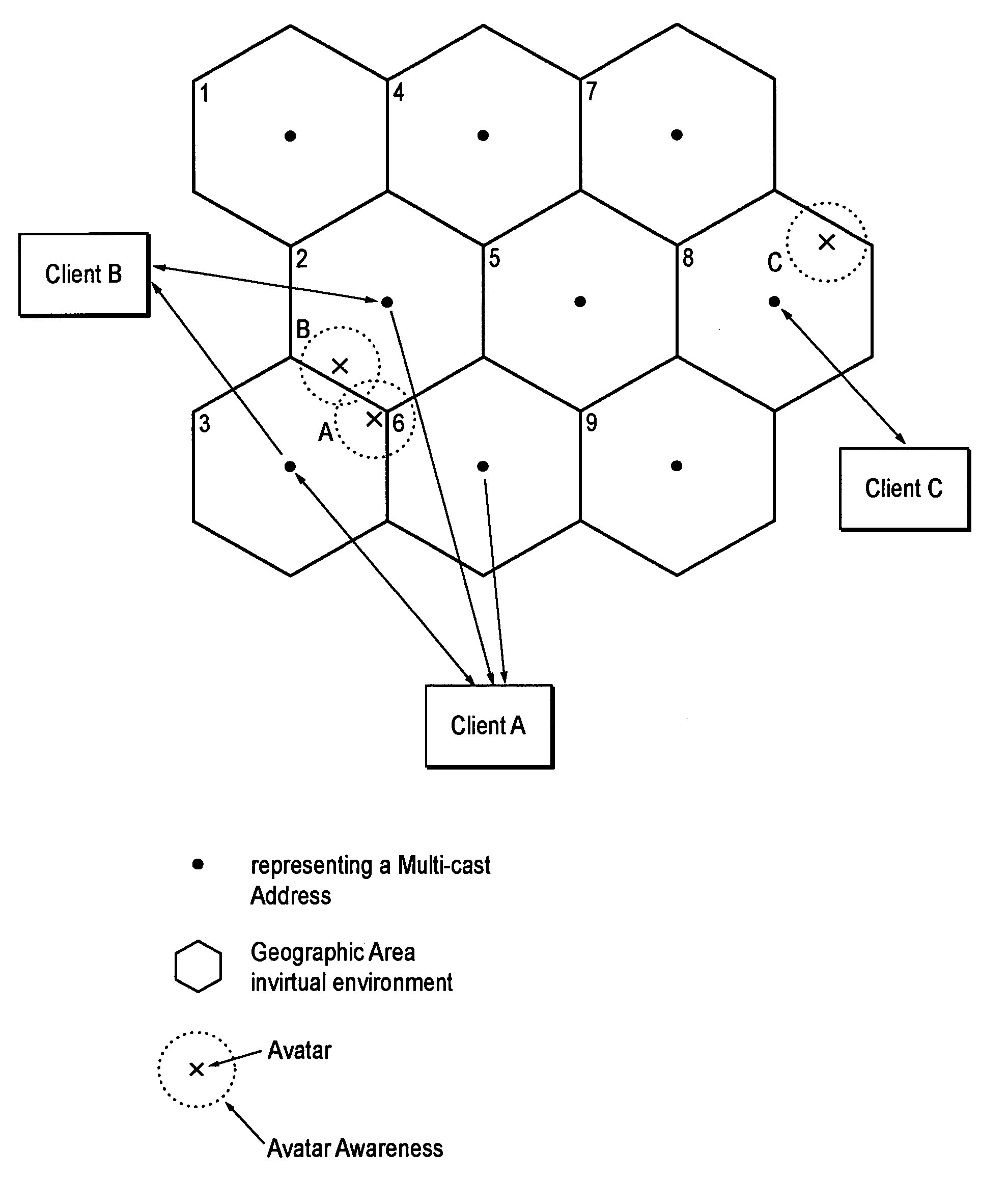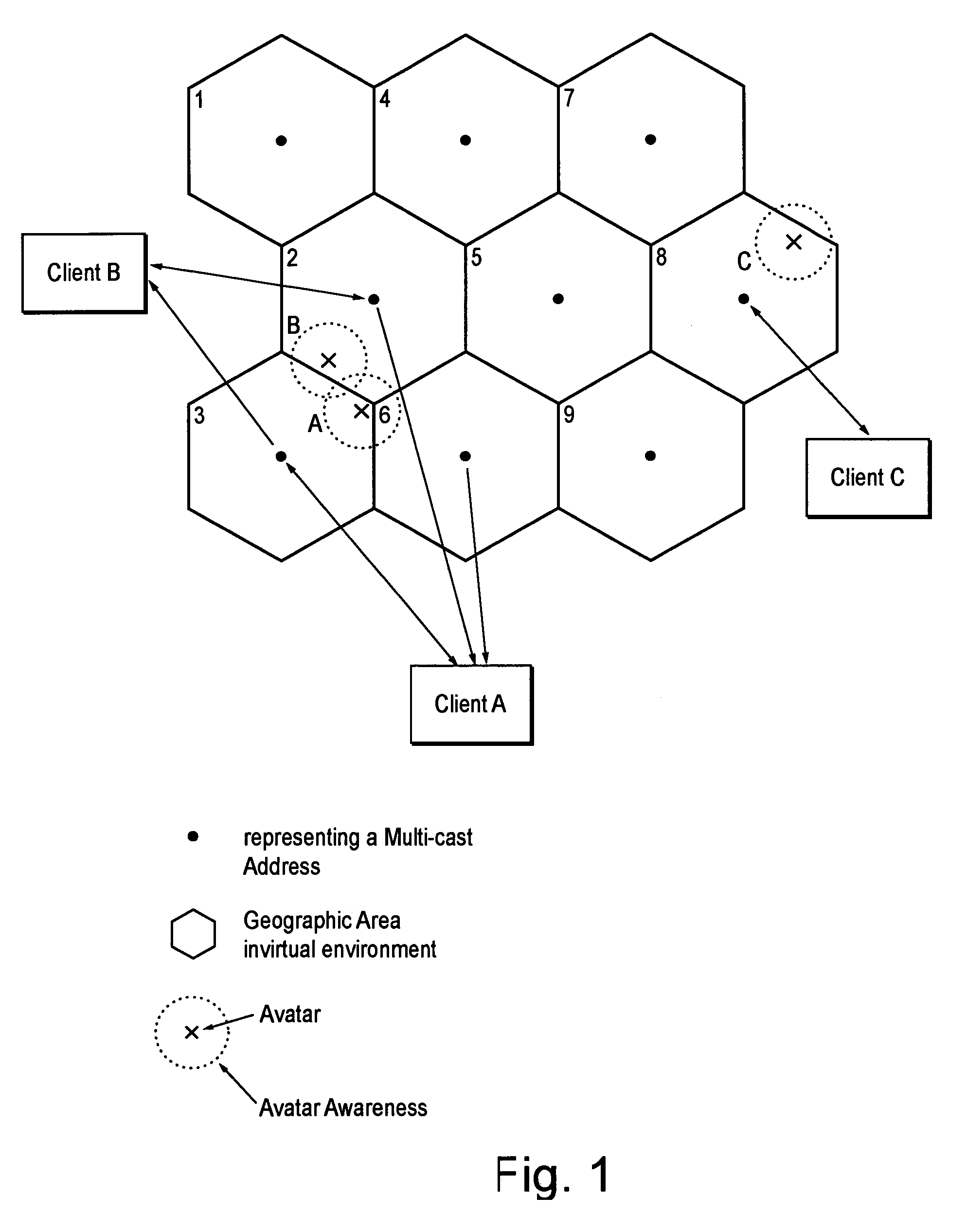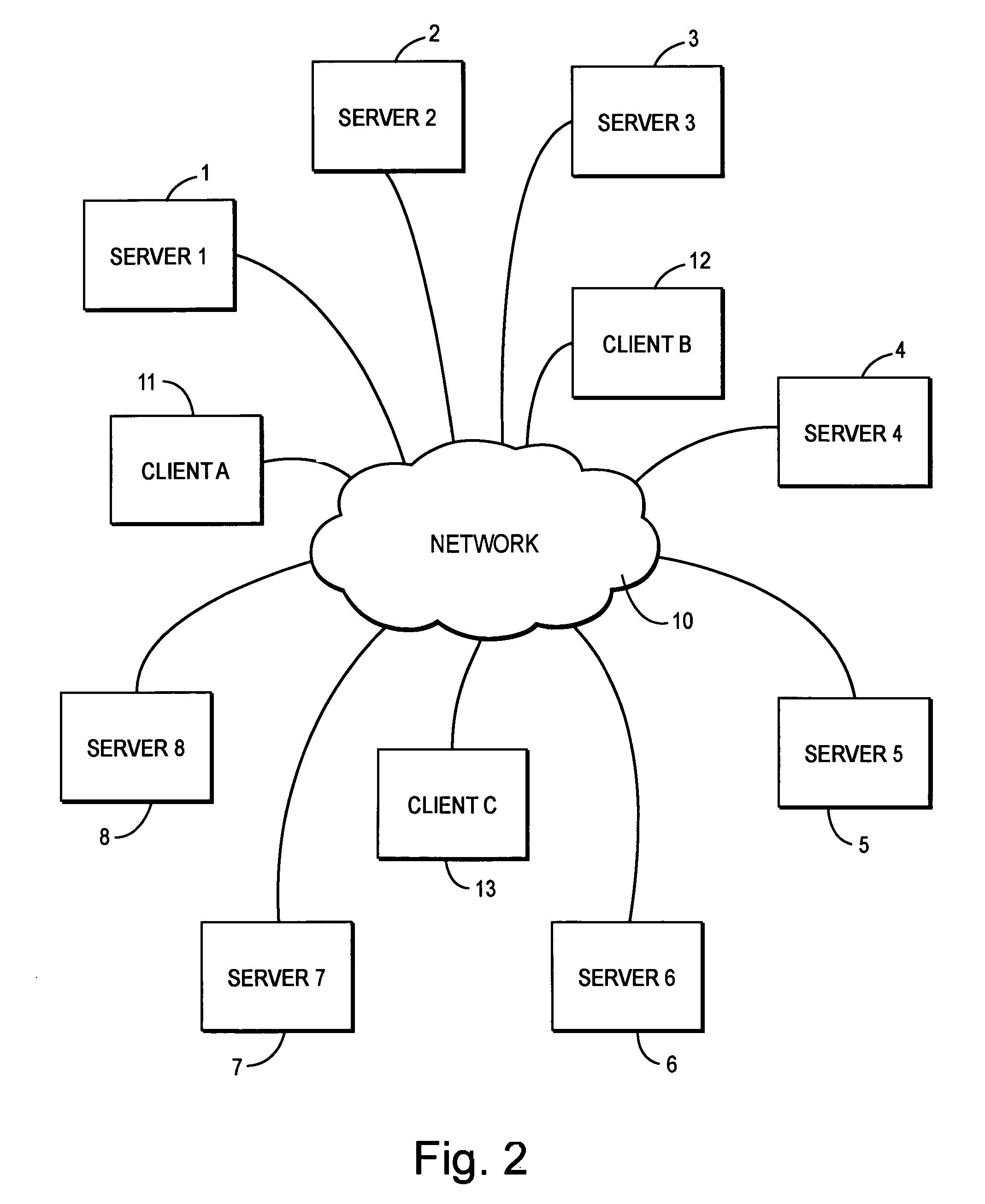Predicting avatar movement in a distributed virtual environment
a distributed virtual environment and avatar technology, applied in the field of distributed virtual environment, can solve problems such as visual glitches, applicability breakdowns, and reduce the interactive nature of the client user interface, and achieve the effect of reducing the likelihood of prediction
- Summary
- Abstract
- Description
- Claims
- Application Information
AI Technical Summary
Benefits of technology
Problems solved by technology
Method used
Image
Examples
first embodiment
[0066]the present invention will now be described with reference to FIGS. 7 to 9.
[0067]FIG. 7 illustrates avatar movement from sample point to sample point and treats the avatar movement as a series of straight runs each run comprising two or more sample points. In this embodiment the prediction model consists of a table of run lengths against a probability of occurrence Such a table is illustrated below:
[0068]
Run lengthNumber of(m)occurrencesLikelihood0.0-1.010001.01.0-2.08700.872.0-3.07000.73.0-4.05000.54.0-5.03000.35.0-6.01000.16.0-7.0100.01>7.000
[0069]FIG. 7 illustrates five runs in a model time frame or 30 sample. Each run length from sample 1 to 7, 7 to 11, 11 to 19, 19 to 21 and 21 to 30 is termed a prediction time frame and thus each model time frame consists of a variable number of variable length prediction time frames. When the direction of movement is detected as changing, a new prediction time frame (run length) is started.
[0070]In the table above the model time frame c...
second embodiment
[0076]the present invention will now be described with reference to FIGS. 10 and 11.
[0077]This embodiment of the present invention is similar to the first embodiment except that instead of measuring a run length as being from “point to point”, a run length is calculated along a corridor. This allows for some deviation in the path before it is considered that the avatar has changed direction. FIG. 10 illustrates the use of corridors to define run lengths.
[0078]FIG. 11 is a flow diagram illustrating the operation of this embodiment. In step S16 the first two samples are input in the model time frame and the sample counter is set to equal 2. In step S17 the current run length within a corridor is determined and in step S18 the entry in the table for the current run length is incremented. In step S19 the likelihood values in the table are updated and in step S20 the next sample point is awaited. When the next sample point is received in step S21 the length of the current samples in the ...
third embodiment
[0081]the present invention will now be described with reference to FIGS. 12 to 14.
[0082]This approach attempts to map avatar motion into a probability area of occupation. As can be seen in FIG. 12a the avatar motion can be seen as a number of paths between points and this is broken up in the method to a series of segments 1 to 7.
[0083]Each of the segments comprises a prediction time frame. As illustrated in FIG. 10a the model time frame thus comprises seven prediction time frames in this embodiment.
[0084]Referring to the flow diagram of FIG. 13a which illustrates a first method, in step S30 the first sample point of a prediction time frame is used as the origin of the model and thus the prediction time frame is relatively aligned with the origin of the model. In step S31 the prediction time frame is relatively aligned with the model using the path to the reference sample point as illustrated in FIG. 10b. The reference sample point comprises a first sample point in a segment and thu...
PUM
 Login to View More
Login to View More Abstract
Description
Claims
Application Information
 Login to View More
Login to View More - R&D
- Intellectual Property
- Life Sciences
- Materials
- Tech Scout
- Unparalleled Data Quality
- Higher Quality Content
- 60% Fewer Hallucinations
Browse by: Latest US Patents, China's latest patents, Technical Efficacy Thesaurus, Application Domain, Technology Topic, Popular Technical Reports.
© 2025 PatSnap. All rights reserved.Legal|Privacy policy|Modern Slavery Act Transparency Statement|Sitemap|About US| Contact US: help@patsnap.com



